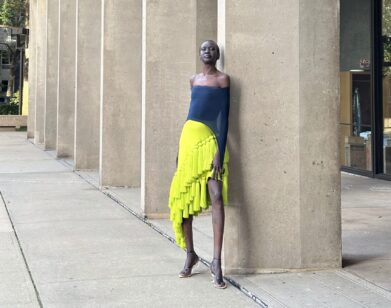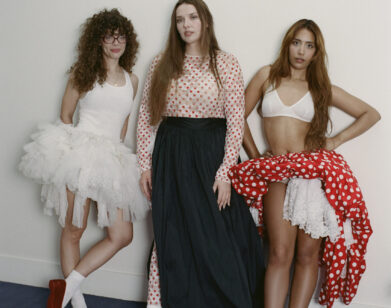Prabal Gurung
Almost five years after launching his own line, Prabal Gurung still has the same drive and heart—this, despite his company having evolved from a self-started 350-square-foot East Village space with two employees to a 6,000-square-foot studio in the Garment District with 12 employees. “I internalize the success and am grateful,” Gurung says. “Good. Got to work, move on.”
The Singapore-born, Nepal-raised Gurung’s roots in Kathmandu inform not only his industriousness, but his aesthetic sensibility and embrace of shots of color as well (his first collection was notably black, white, and vibrant red). Gurung also credits a supportive home environment with playing an important role in his artistic development. “I was definitely considered different growing up,” he says. “I learned that being me was all right because my family celebrated those differences.”
Gurung first set on his career path at the National Institute of Fashion Technology in New Delhi, India-a country that, he says, continues to be an inspiration: “From the brilliance of Bollywood to the fabrics, embroideries, and textures you can find at Chandni Chowk to the fast-paced streets of Mumbai, it’s an incredible place.” In 1999, he decamped to New York, where he attended Parsons and in 2004 landed as design director at Bill Blass, an experience that cemented his taste for what Gurung calls, “American sportswear created with couture ideals.” When Blass shuttered at the end of 2008, he set up shop with his own label and launched his debut collection in February 2009.
Gurung seeks to preserve a kind of elegance that’s rare to find in the streets nowadays. “Well-read, well-traveled, with a sense of humility and grace” is how he describes his feminine ideal. His Spring show highlighted this kind of style, with looks inspired by glamorous 1950s silhouettes and colors. There were all sorts of pastels with black-and-white prints and, of course, pops of red. The effect is lady sophistication with just enough sex.
At this point in his career, Gurung conveys absolute clarity of vision. He maintains a balance between the business and creative aspects of his work by focusing on numbers and logistics until 3 p.m., then throwing himself into the designing half of his day with an imperviousness to outside whims. He justifies this approach by quoting a bit of wisdom once given to him by the artist Cecily Brown at a dinner party. “A lot of people have an opinion,” he paraphrases. “If you listen to them too much, your work will get influenced and you make no one happy.”







